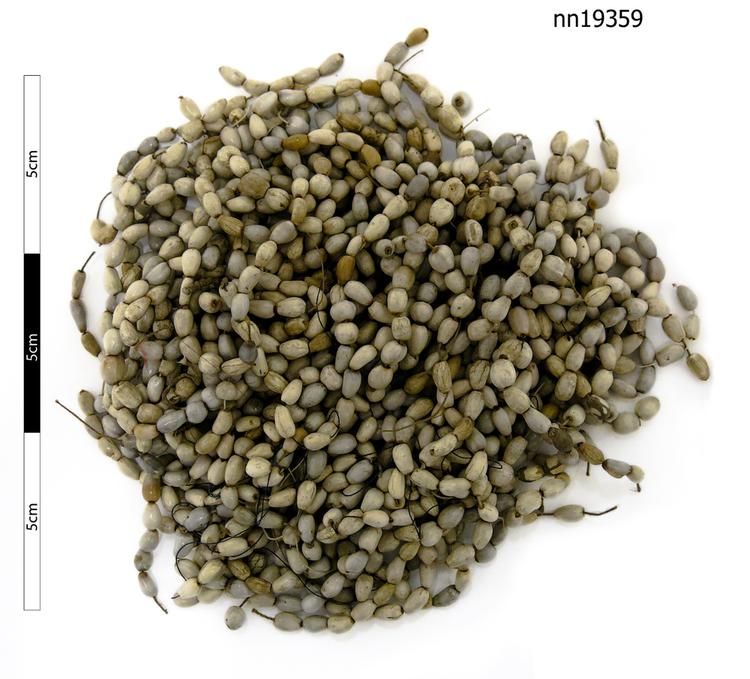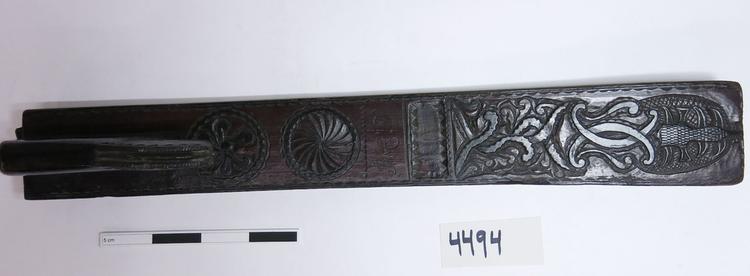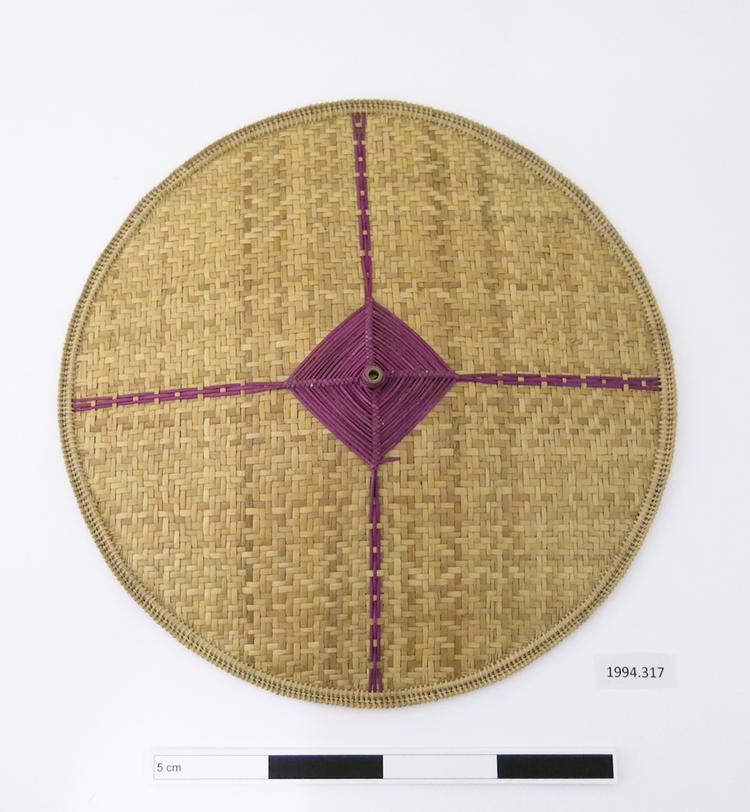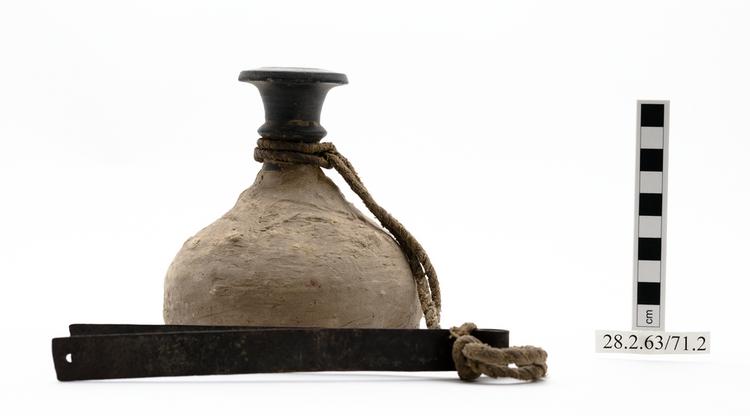
Arrow with bamboo shaft with bands of burnished linear decoration and a notched end. Tapering, wooden foreshaft with and integral triangular head with 2 integral side barbs and an elongated tip bound with vegetable fibre binding. Sections of foreshaft bound with vegetable fibre. Foreshaft attached to shaft with vegetable fibre sealed with resin.
Arrow with Etched Decoration, Buka island, Solomon Islands, Central Melanesia. The arrows of Buka in the northern Solomon Islands are justly famous for their refined workmanship. The jointed nodes of the bamboo shafts would distort the arrow’s flight by catching on the side of the bow, and so all arrow shafts from the Solomon Islands have their joints shaved down flush, with varying degrees of artistry in the organisation of the peeled strips. The exposed inner bamboo wood naturally absorbs pigments and dirt, so old arrows become darkened at these joints anyway. On Buka, however, this practical modification became highly developed into the marking of each bamboo joint with elaborate panels of geometric decoration. Each arrow-maker developed and used his own mark, and the people of Buka were historically able to trace each arrow to a particular village or artist. This purple-stained hardwood head demonstrates considerable refinement in its form, and is neatly bound onto the shaft with prepared orchid stem fibres. Bamboo, hardwood, orchid stem, pigment. Late 19th Century. Acquired from a New Britain trader circa 1900 by the father of Mr. W.E. Cooper.
fighting






